Bhumi Amla (Phyllanthus niruri): Bhumi Amla Benefits
Introduction to Bhumi Amla (Phyllanthus niruri)
Bhumi Amla (Phyllanthus niruri), is a powerful medicinal herb highly useful in Ayurveda for its remarkable healing abilities. Commonly called “Stonebreaker” because of its traditional use in treating kidney stones, Bhumi Amla has been a cornerstone of Ayurvedic medicine for centuries. This small, green herb thrives in tropical and subtropical regions and is useful for its hepatoprotective, anti-inflammatory, antioxidant, and antiviral properties.
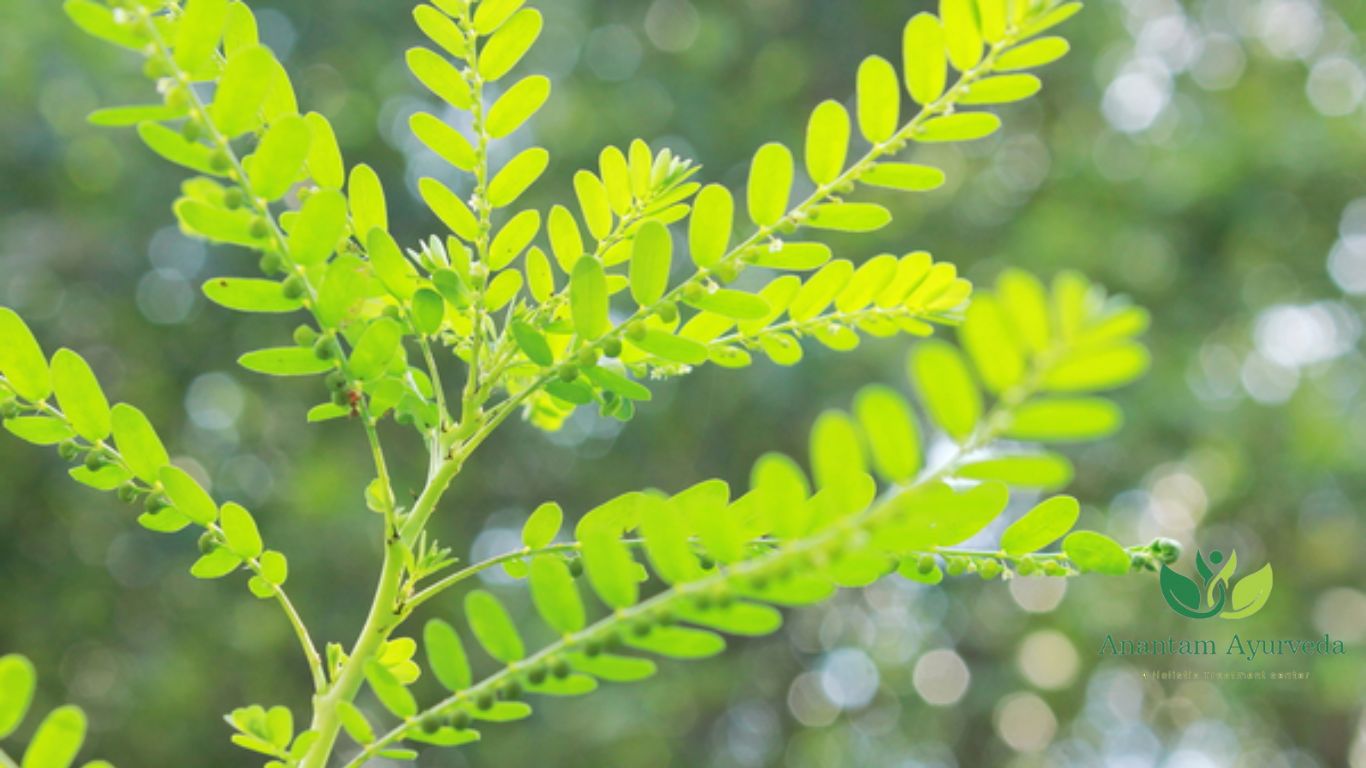
Botanical Description of Bhumi Amla
Bhumi Amla belongs to the Euphorbiaceae family and is a small annual plant that grows close to the ground. It features:
- Tiny, greenish flowers that bloom along the stem.
- Oblong leaves arranged in a feather-like pattern.
- Small, round fruits that grow beneath the leaves, giving it the name “Bhumi Amla” (Amla of the ground).
- A bitter taste, which aligns with its medicinal attributes in Ayurveda.
Chemical Composition
Phyllanthus niruri contains a variety of bioactive compounds, including:
-
Glycosides, flavonoids, alkaloids, ellagitannins and phenylpropanoids with antioxidant, anti-inflammatory, and antimicrobial properties.
-
Niranthin, nirtetralin and phyltetralin are isolated lignans from the leaves.
-
Kaempferol-4-rhamnopyranoside and criodictiol-7-rhamnopyranoside are flavonoid glycosides with medicinal benefits.
-
Lup-20(29)-en-3β-ol and its acetates are triterpenoids with anti-inflammatory effects.
-
Common lipids and sterols, contributing to cellular health and cholesterol management.
These compounds contribute to the plant’s potential in treating liver issues, inflammation, and oxidative stress.
Botanical Classification of Bhumi Amla
Bhumi Amla belongs to the Phyllanthaceae family and exhibits a distinct morphology that contributes to its unique medicinal properties. Below is its detailed botanical classification:
-
Kingdom: Plantae
-
Clade: Angiosperms
-
Clade: Eudicots
-
Clade: Rosids
-
Order: Malpighiales
-
Family: Phyllanthaceae
-
Genus: Phyllanthus
-
Species: Phyllanthus niruri
Morphology and Appearance of Bhumi Amla
Bhumi Amla is a small, herbaceous plant that grows to a height of 50–70 cm. It thrives in tropical and subtropical regions, particularly in coastal and temperate zones of India. Its distinguishing features include:
-
Leaves: Small, elliptical, thin, and arranged alternately along the branches.
-
Flowers: Pale green with streaks of red, monoecious, and grow in pairs.
-
Bark: Smooth and light green.
-
Fruits: Tiny, soft capsules containing numerous small seeds.
The plant flourishes in regions with moderate temperatures and humid conditions, making coastal India a favorable habitat for its growth.
Classical Categorization of Bhumi Amla (Phyllanthus niruri) in Ayurveda
Bhumi Amla (Bhumyamlaki) has been classified in various Ayurvedic texts based on its therapeutic properties and medicinal usage.
1. Charaka Samhita
-
Kasa Hara – Effective in treating cough and respiratory issues.
-
Shwasa Hara – Beneficial in managing asthma and breathing difficulties.
2. Dhanvantari Nighantu
-
Classified under Chandanadi Varga, indicating its cooling and detoxifying nature.
3. Bhavaprakasha Nighantu
-
Listed in Guduchyadi Varga, highlighting its rejuvenating and immune-boosting effects.
4. Raja Nighantu
-
Included in Parpatadi Varga, known for its ability to treat fevers, liver disorders, and digestive issues.
5. Kaiyyadeva Nighantu
-
Placed under Oushadhi Varga, recognizing it as a potent medicinal herb for various ailments.
This classical categorization underscores Bhumi Amla’s importance in Ayurvedic treatment, particularly for respiratory health, liver detoxification, and immunity enhancement.
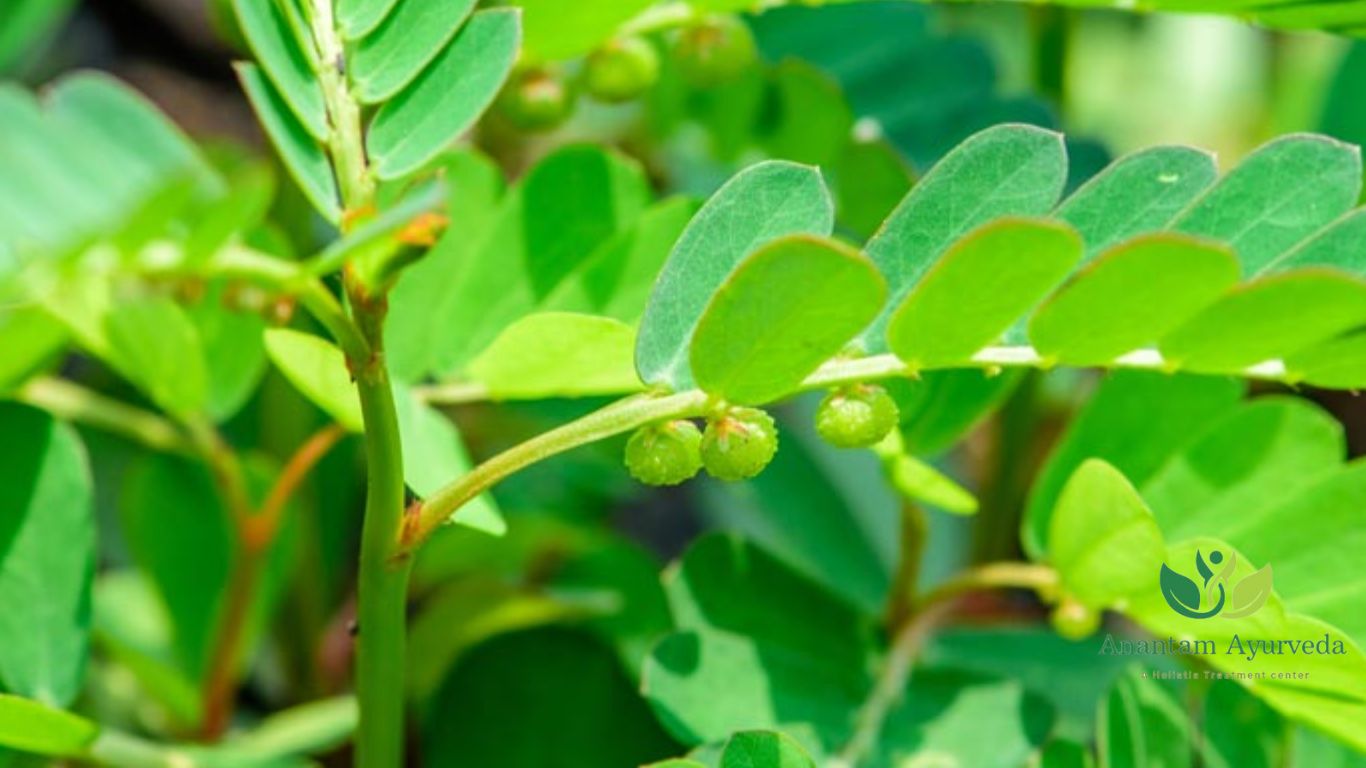
Bhumi Amla (Phyllanthus niruri): Vernacular Names and Sanskrit Synonyms
Phyllanthus niruri) is a globally recognized medicinal herb, widely used in Ayurveda, Siddha, Unani, and traditional folk medicine. Its therapeutic properties have made it a common herbal remedy in various cultures, leading to its identification by different names across multiple languages and regions.
Vernacular Names of Bhumi Amla in Different Languages
Indian Languages
-
Hindi: Jangli Amlai, Bhui Amla
-
Bengali: Bhui Amla
-
Gujarati: Bhanya Amli
-
Kannada: Nelanelli, Bhu Nelli
-
Malayalam: Kizharnelli, Kizhukanelli
-
Marathi: Bhui Amla, Bhui Avla
-
Oriya: Bhui Amla
-
Tamil: Kilanelli
-
Telugu: Nela Usiraka
-
Urdu: Bhumiamala
International Names
-
English: Gale of the Wind, Stonebreaker
-
Brazilian (Portuguese): Quebrapedra
-
Spanish: Chanca Piedra
-
French: Herbe du Chargin
-
Filipino (Philippines): Hierba de San Paulo
-
Sinhala (Sri Lanka): Pittawaka
-
Burmese (Myanmar): Mizhipiya
-
West Indies: Pettitamarine
Regional and Folk Names in India
-
Bihar: Meri Koa, Kandara
-
Canresa: Kirannelligida
-
Deccan: Bhuvinanvalah
-
Delhi: Dhadhan, Monk
-
Porbandar: Bhonyanmeri
-
Sindh: Niruri
Sanskrit Synonyms of Bhumi Amla
-
Bhoomi Amalaki / Bhumyamlaki / Bhu Dhatri – The plant bears small fruits close to the ground.
-
Shatamala / Bahupatra – It has numerous leaves.
-
Bahusuta / Bahuphala – The plant produces multiple fruits.
-
Tali – It helps eliminate toxins from the body and promotes health.
-
Tamalaki – The fruit resembles small Amalaki (Indian Gooseberry).
-
Trutoshiva / Sookshma Patri – The leaves are tiny.
-
Shubhankini / Shiva – Considered auspicious in Ayurveda.
-
Bahu Veerya – A highly potent medicinal plant.
-
Amala – It purifies the body.
-
Shiva – A powerful healing herb.
-
Bahuphala – Produces abundant fruits.
-
Drudha Pada / Drudha Mala – The plant has strong medicinal properties.
-
Himalaya / Vitunnaka / Dhurdha Phala – The plant has strong detoxifying properties.
-
Tunnakarika / Ajata / Jatapi / Ucchata / Charuta – Various synonyms indicating its health benefits.
Symbolic and Medicinal Significance in Ayurveda
These Sanskrit names describe the morphology, potency, and therapeutic effects of Bhumi Amla, signifying its importance in detoxification, rejuvenation, and disease management.
Traditional Ayurvedic Significance of Bhumi Amla
Ayurvedic Properties of Bhumi Amla
-
Taste (Rasa): Bitter (Tikta), Astringent (Kashaya), Sweet (Madhura)
-
Qualities (Guna): Light (Laghu), Dry (Ruksha)
-
Post-digestive Effect (Vipaka): Sweet (Madhura)
-
Potency (Veerya): Cooling (Sheeta)
-
Actions (Karma): Pacifies Kapha and Pitta doshas, detoxifies the liver, and reduces inflammation.
Parts Used in Ayurvedic Medicine
-
Whole Plant – The entire plant, including the leaves, stems, and roots, is used for medicinal purposes.
Recommended Dosage of Bhumi Amla
-
Leaf Juice (Swaras): 10 to 20 ml per day, preferably on an empty stomach for maximum absorption.
-
Bhumi Amla Powder (Churna): 3 to 6 grams per day, either in a single dose or divided into two doses. It can be taken with honey, warm water, or buttermilk based on the condition being treated.
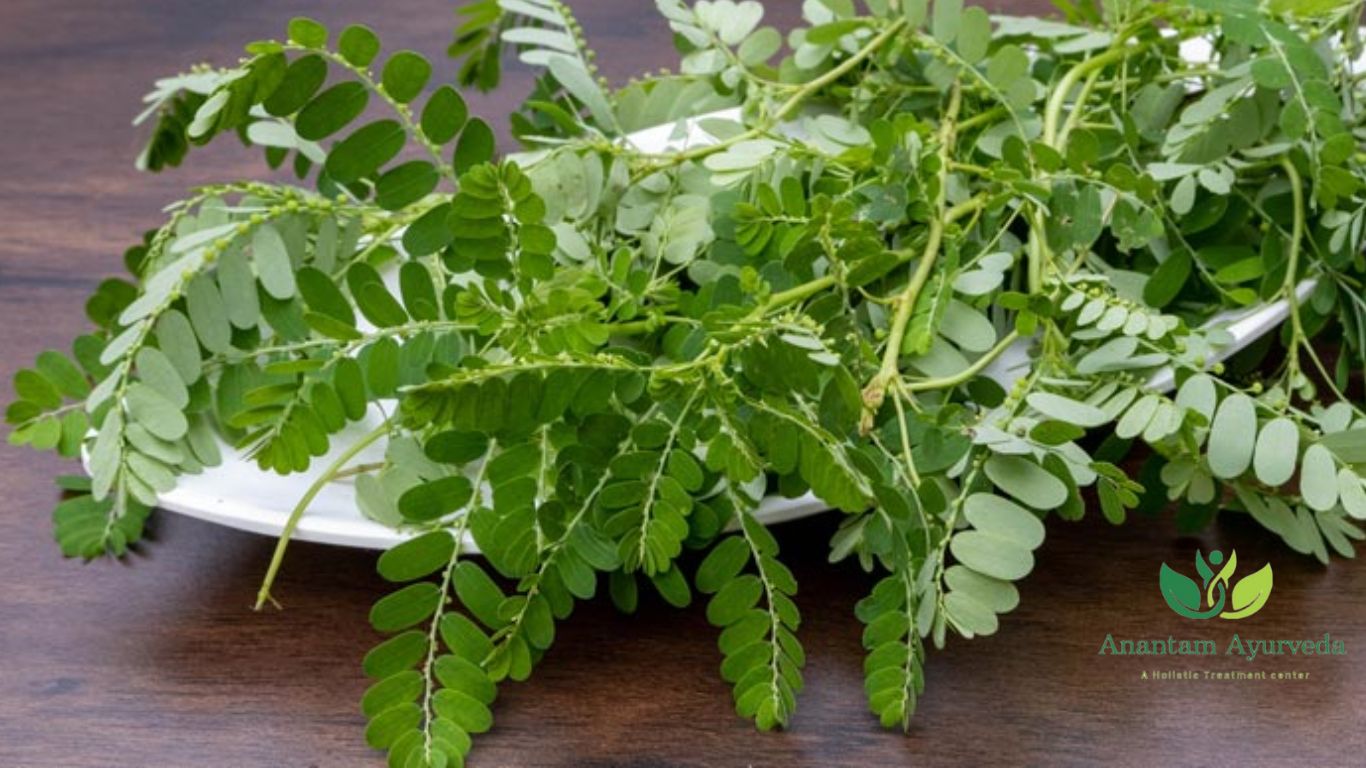
Health Benefits of Bhumi Amla in Ayurveda
1. Bhumi Amla for Liver Health
One of the most well-documented uses of Bhumi Amla is for liver protection and detoxification. Ayurvedic practitioners recommend Bhumi Amla for conditions such as:
- Jaundice – Helps in reducing bilirubin levels and enhances liver function.
- Hepatitis B & C – Demonstrates antiviral properties that support liver recovery.
- Fatty Liver – Helps in reducing hepatic fat accumulation and supports liver enzymes.
The presence of phyllanthin and hypophyllanthin in Bhumi Amla makes it a natural hepatoprotective agent, supporting the regeneration of liver cells.
2. Bhumi Amla for Kidney and Urinary Health
Bhumi Amla is widely used in Ayurveda for treating kidney stones and urinary tract infections (UTIs). It possesses diuretic properties, helping in:
- Flushing out toxins from the urinary tract.
- Breaking down kidney stones naturally.
- Reducing inflammation in the bladder and kidneys.
Regular consumption of Bhumi Amla decoction can prevent the recurrence of renal calculi (kidney stones) and maintain overall kidney health.
3. Bhumi Amla for Digestive Wellness
The bitter and astringent properties of Bhumi Amla aid in digestive health by:
- Enhancing appetite and metabolism.
- Regulating bowel movements, thereby preventing constipation and bloating.
- Reducing gastric ulcers and acidity by balancing Pitta dosha.
Ayurvedic formulations containing Bhumi Amla help in promoting gut health and detoxification.
4. Bhumi Amla for Skin and Hair Health
Due to its antioxidant and anti-inflammatory properties, Bhumi Amla is highly effective in managing various skin and hair conditions. It helps in:
-
- Purifying blood, thereby reducing acne, eczema, and other skin disorders.
- Preventing premature greying of hair by nourishing the scalp.
- Strengthening hair follicles, reducing hair fall and dandruff.
5. Bhumi Amla as an Immunity Booster
Bhumi Amla contains bioactive compounds like alkaloids, flavonoids, and lignans that strengthen the immune system. Regular intake enhances the body’s defense mechanisms against infections, fevers, and seasonal allergies.
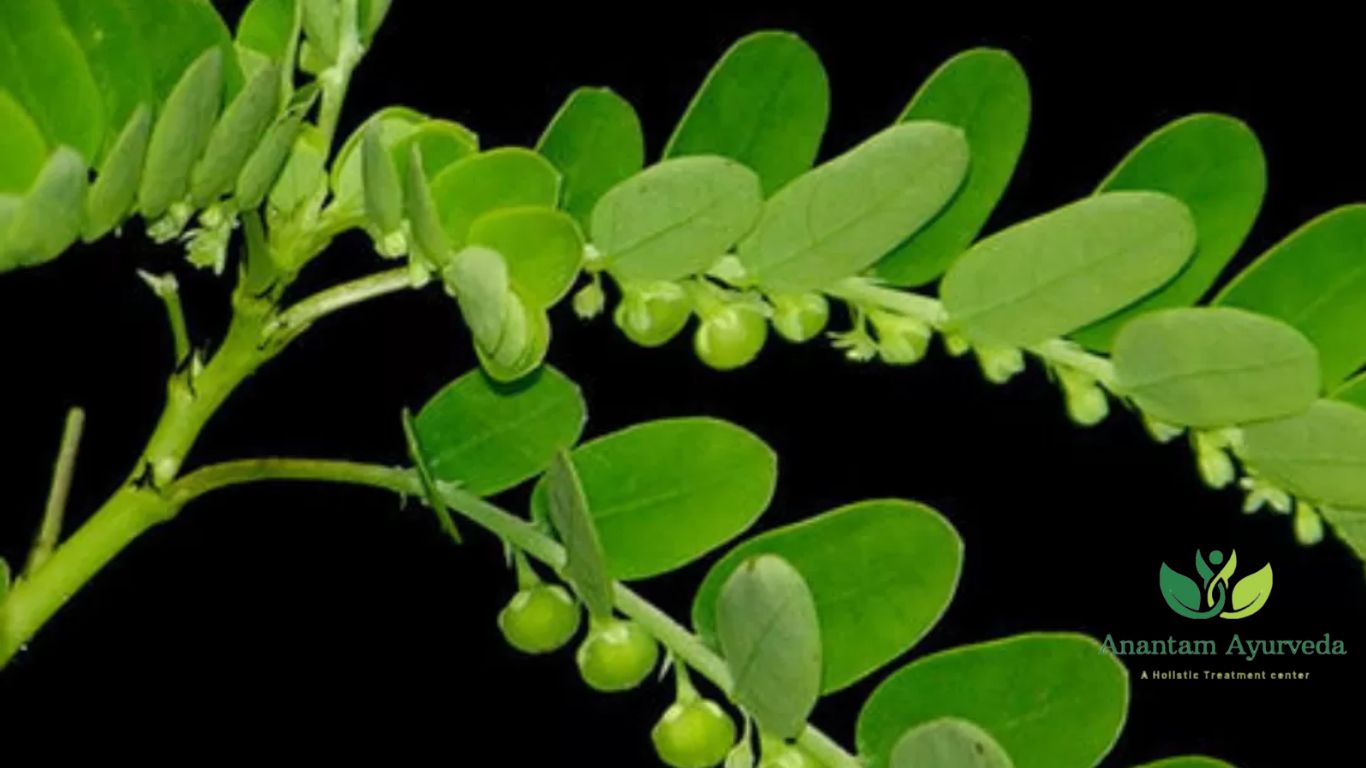
Home remedies using Phyllanthus niruri (Bhumyamlaki)
-
Skin Infections:
-
A paste made from the leaves of Phyllanthus niruri can be applied directly onto the skin to treat various skin infections. The antimicrobial and anti-inflammatory properties of the plant help in reducing irritation, redness, and infection on the skin.
-
-
Fractures (Pain and Swelling):
-
For fractures and associated pain or swelling, a paste made from the whole plant of Phyllanthus niruri, combined with rock salt, is applied to the affected area. This remedy helps reduce swelling and promotes healing, thanks to the plant’s anti-inflammatory and analgesic effects.
-
-
Eye Diseases (Conjunctivitis, Blepharitis):
-
-
Indigestion, Hyperacidity, and Jaundice:
-
The fresh juice of Bhumyamlaki leaves, taken in a dose of 15-20 ml on an empty stomach every morning, is an effective remedy for indigestion, hyperacidity, and jaundice. The plant has hepatoprotective properties and helps in improving liver function, digestion, and detoxification.
-
-
Fever, Hepatomegaly (Enlarged Liver), and Splenomegaly (Enlarged Spleen):
-
Consuming 15 ml of fresh juice from the whole plant of Phyllanthus niruri is known to help in the treatment of fever, as well as conditions like hepatomegaly and splenomegaly. The plant supports liver function and helps in detoxification, making it beneficial for these conditions.
-
-
Cough and Asthma:
-
For treating respiratory issues like cough and asthma, Phyllanthus niruri juice can be used in two ways: as nasal drops or taken internally mixed with sugar candy. This remedy helps in clearing mucus, easing breathing, and reducing inflammation in the respiratory system.
-
-
Typhoid:
-
Phyllanthus niruri can be used to prepare a herbal tea by boiling fresh leaves of the plant. This tea is helpful in treating typhoid by improving digestion, boosting immunity, and detoxifying the body, which is important in the recovery process.
-
-
Blood Purification and Skin Infections:
-
A decoction made from the whole plant of Phyllanthus niruri (30 ml) acts as a natural blood purifier. It helps cleanse the blood of toxins and can also aid in treating skin infections due to its antibacterial and healing properties.
-
-
Jaundice:
-
A traditional remedy for jaundice involves consuming a paste of Bhumyamlaki mixed with buttermilk. This helps in liver detoxification and promotes the proper functioning of the liver, aiding in the treatment of jaundice.
-
-
Pain in Eyes:
-
For eye pain or inflammation, a paste made from Bhumyamlaki leaves, rock salt, and sour gruel is prepared by rubbing the ingredients in a copper vessel. When it solidifies, it is applied as a paste on the eyelids. This remedy helps in reducing eye pain, swelling, and discomfort.
-
Prameha (Diabetes):
-
A mixture of 20 gm of Bhumyamlaki and 20 peppercorns (Maricha) can be taken internally to treat Prameha, a condition similar to diabetes. This remedy helps in controlling blood sugar levels and improving urinary health.
-
Haemorrhage (Bleeding):
-
To stop bleeding or treat haemorrhage, Bhumyamlaki seeds are mixed with rice water and consumed for two weeks. This combination helps in reducing inflammation and promoting clotting.
-
Pradara (Leucorrhea):
-
For treating Pradara (excessive vaginal discharge), the root of Bhumyamlaki is taken with rice water for 2-3 days. This remedy helps in regulating the discharge and alleviating associated symptoms.
-
Oedema/Swelling:
-
A paste made from the leaves and roots of Bhumyamlaki, mixed with rice water, can be taken internally to reduce oedema (swelling). It helps in fluid retention and aids in reducing swelling in the body.
-
Chronic Dysentery:
-
The young shoots of Phyllanthus niruri can be made into an infusion and administered to treat chronic dysentery. The plant’s anti-inflammatory and antimicrobial properties help to heal the gut and reduce symptoms of dysentery.
-
Typhoid (Alternative Remedy):
-
For typhoid, Bhumyamlaki leaves can be boiled to prepare a tea. Drinking this herbal tea helps in alleviating symptoms of typhoid, improving digestion, and boosting overall immunity.
These home remedies showcase the diverse medicinal uses of Phyllanthus niruri, making it a valuable plant for addressing a range of ailments, from skin issues to digestive disorders, liver conditions, and respiratory problems.
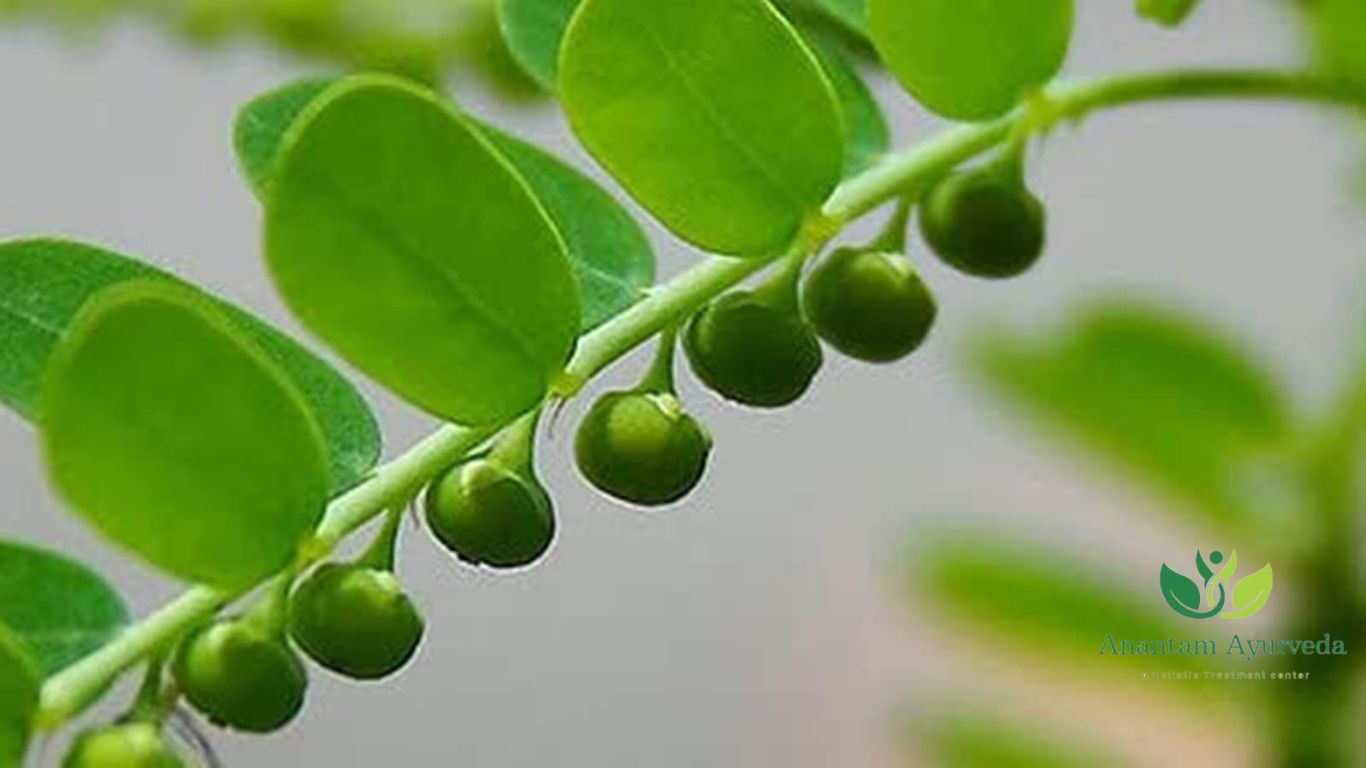
Scientific Studies Supporting Bhumi Amla’s Benefits
Several scientific studies validate the traditional Ayurvedic claims of Bhumi Amla’s effectiveness:
- Liver Protection – Studies have shown that Bhumi Amla extracts help in preventing liver damage caused by alcohol, toxins, and viral infections.
- Kidney Health – Research highlights its potential in dissolving kidney stones and improving renal function.
- Antiviral Properties – Clinical trials indicate Bhumi Amla’s efficacy in inhibiting Hepatitis B virus replication.
- Anti-Inflammatory Effects – Studies confirm its role in reducing oxidative stress and inflammation in chronic diseases.
How to Use Bhumi Amla in Daily Life
1. Bhumi Amla Powder
-
- Take ½ teaspoon of Bhumi Amla powder mixed with honey or warm water on an empty stomach.
- Can be added to herbal teas for enhanced liver detoxification.
2. Bhumi Amla Juice
-
- Fresh juice extracted from the leaves can be consumed daily (10-15ml) to improve digestion and immunity.
- Helps in flushing out toxins and maintaining a healthy metabolism.
3. Bhumi Amla Capsules/Tablets
-
- Convenient for individuals who prefer capsule form for liver health, digestion, and overall immunity.
- Follow dosage recommendations as per an Ayurvedic practitioner.
4. Bhumi Amla Decoction (Kadha)
- Boil fresh or dried Bhumi Amla in water, reduce it to half, and consume it warm.
- Ideal for liver cleansing, urinary disorders, and respiratory ailments.
Precautions and Side Effects
Although Bhumi Amla is generally safe for consumption, some precautions should be taken:
- Pregnant and lactating women should consult an Ayurvedic doctor before use.
- Individuals with low blood pressure should monitor their levels, as it may cause hypotension.
- Excessive consumption may lead to mild gastrointestinal discomfort in some individuals.
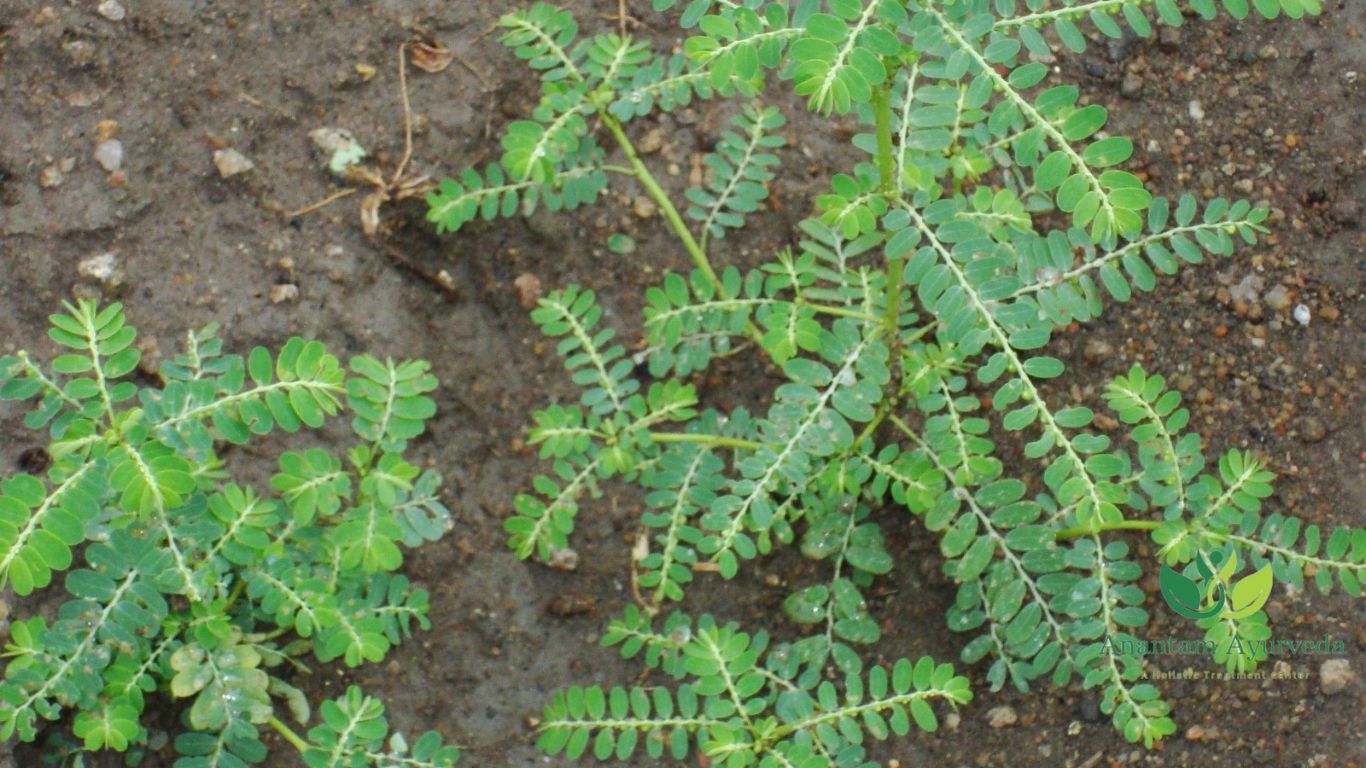
Conclusion
Bhumi Amla (Phyllanthus niruri) is a powerful Ayurvedic herb known for its healing, detoxifying, and rejuvenating properties. From liver health to kidney care, immunity enhancement to digestive wellness, Bhumi Amla offers a holistic approach to well-being. With scientific research backing its traditional uses, Bhumi Amla continues to be a valuable herbal remedy in modern Ayurveda.
For those looking to incorporate Bhumi Amla into their daily routine, choosing pure, organic, and high-quality formulations ensures maximum benefits. If you are facing specific health concerns, consulting a qualified Ayurvedic practitioner is recommended for personalized guidance.
Frequently Asked Questions About Bhumi Amla (Phyllanthus niruri)
1. How Does It Help in Treating Skin Diseases?
It helps detoxify the blood due to its antioxidant, anti-inflammatory, and blood-purifying properties, making it effective in treating skin diseases caused by aggravated Pitta dosha.
2. Can It Reduce the Burning Sensation in Urine?
Yes, it has cooling and diuretic properties, which help relieve burning sensations, prevent bacterial growth, and support urinary tract health.
3. Is It Beneficial for Hair Problems?
Yes, it helps manage hair fall, dandruff, and dryness by balancing Pitta dosha and providing essential nutrients for hair health.
4. Can I Take It Daily?
Yes, it can be consumed daily in recommended doses. However, consult a healthcare expert for proper guidance.
5. What Are the Side Effects of Bhumi Amla?
Some individuals may experience digestive upset or allergic reactions. Seek medical advice if any adverse effects occur.
6. What Is the Difference Between Amla and Bhumi Amla?
-
Amla (Indian Gooseberry) is rich in Vitamin C and widely used for immunity and digestion.
-
Bhumi Amla is an herbal plant known for its liver-protective and detoxifying properties.
7. Does It Help in Weight Loss?
It indirectly supports weight management by improving liver function and metabolism, but it is not a direct weight loss remedy.
8. Does Amla Reduce Belly Fat?
Amla can help improve metabolism and digestion, aiding in overall weight management, but exercise and a balanced diet are essential.
9. Is It Good for Kidney Stones?
Yes, it also known as “Stonebreaker”, helps reduce urinary oxalate levels, supports kidney function, and prevents stone formation.
10. Does It Help with Hepatitis B?
Yes, it has liver-protective and antiviral properties, which help inhibit the hepatitis B virus and support liver function.
11. Can It Prevent Ulcers?
Yes, it reduces gastric acid secretion and protects the stomach lining, helping prevent and heal ulcers.
12. What Are the Benefits of Bhumi Amla for Hair?
It promotes hair regrowth, helps prevent chemotherapy-induced hair loss, and supports healthy scalp conditions.
You can also read about Dengue.
You can follow us on twitter, facebook, instagram & Google News
